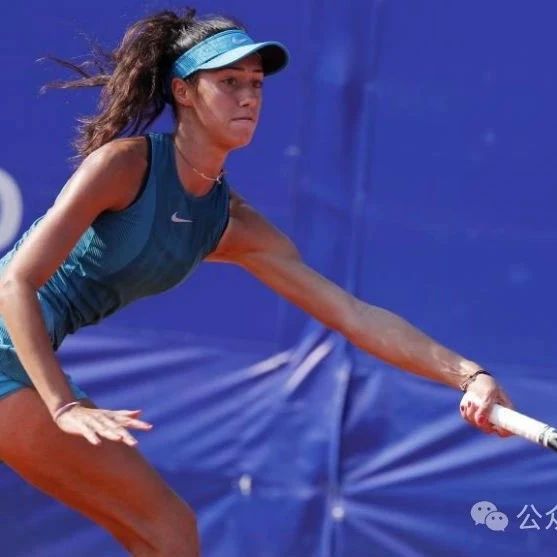Tennis Microscope: The Details of "Hip-Tilting" in the Serve
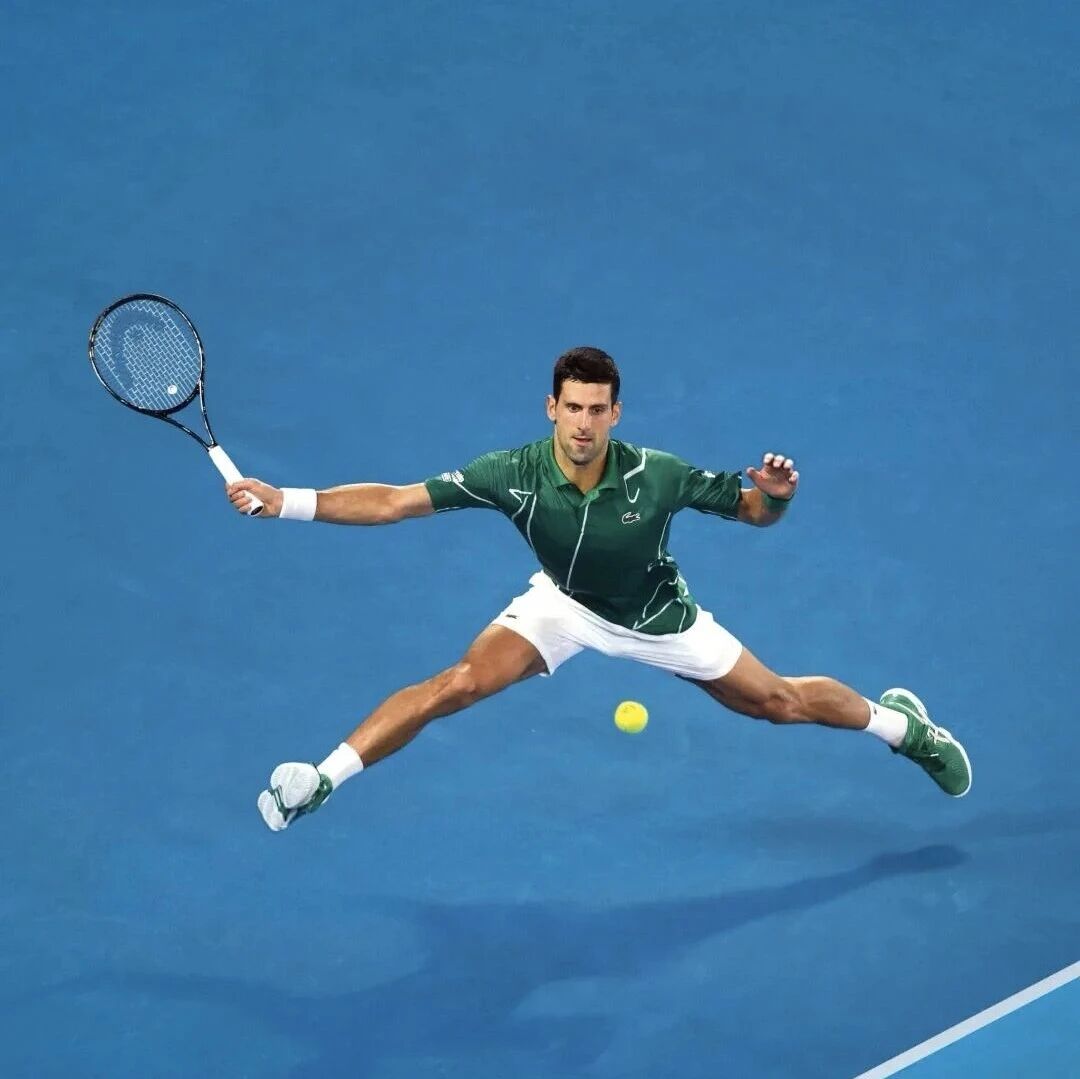
Serving is an emotional act, and as such, it embodies a collection of personal, subjective impressions and interpretations. — *The Politeelli Tennis Handbook*
01
Writing Context
During tennis serve instruction, the author consistently emphasizes to students the importance of developing a "correct technical blueprint"—in other words, thinking strategically before even stepping onto the court to practice.
On one hand, in serve training, the systematic integration of all technical details is far more important than focusing on isolated improvements. The ultimate effectiveness of a serve hinges on the seamless flow of the kinetic chain—deliberately emphasizing a single technical aspect at the expense of overall coordination (such as forearm internal rotation or hip extension) can actually undermine performance. Therefore, students must develop a holistic understanding; only then can their serve technique steadily improve over time.
On the other hand, heuristic training proves far more effective than corrective training. Simply mimicking without understanding won’t lead to mastering the serve—instead, instructional content should focus on capturing the universal principles of serving technique, rather than erasing a player’s individuality. Learners must clearly grasp the underlying mechanics of the technique, as well as the true gap between their current abilities and their long-term goals.
The Tennis Microscope series of articles is more like a collection of puzzle pieces—once players deeply grasp the underlying principles, seamlessly assembling the technical details into a complete picture becomes a natural progression.
In this article, we’ll go over the details of “hip-driven” serving.
02
Why do hip thrusts?
As one of the common techniques in serving, what exactly is the significance of hip extension? Can you still serve effectively without using hip extension? This is perhaps the question on most players' minds.
There are primarily two reasons why the serve must involve hip engagement:
First, the range of motion in the hip joint is the threshold for a proper serve. During the serving motion, the degree to which the player’s front-side hip joint moves directly determines whether the serve is generated by rotating around the hip joint or the shoulder joint—rotating primarily through the shoulders significantly increases the risk of shoulder injuries. Serving with the hips as the axis not only provides a longer lever arm, making it easier to generate racquet head speed, but also ensures greater stability compared to relying on the shoulder joint alone. ("Shoulder joint compensation" is the primary reason players fail to fully rotate their bodies during the serve preparation phase.)
Secondly, hip alignment is the foundation for maintaining consistency across all types of serves. We’ve probably all heard that when serving, it’s crucial to feel the power coming from an upward motion. However, if a player keeps their entire pelvis outside the baseline after tossing the ball, their torso will be forced to move only forward during the swing—and this, in turn, will naturally cause the arm to follow suit, making it far too easy to net the ball. (As the pelvis serves as a vital link between the upper and lower body, failing to position it correctly during the setup phase can prevent players from executing many key technical details of the swing.)
Therefore, from a health, efficiency, or fundamental perspective, it is essential for players to effectively utilize their hip joints when serving.
03
Key points of the hip thrust exercise
The key points of the hip-thrust movement are: tuck your tailbone, lift your front hip higher, and coil your back leg for power.
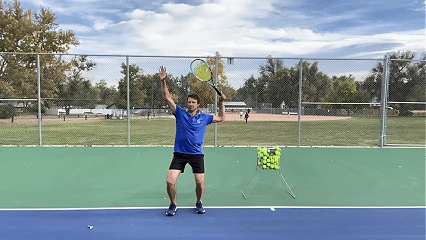
Tailbone engagement, anterior hip lift, and rear-leg power buildup
Next, I’d like to invite Coach Jeff to model and carefully analyze these key points one by one.
1. Tailbone
Many players serve by sticking their hips out, which restricts hip joint mobility and causes excessive curvature in the lumbar spine. In this position, if you imagine the pelvis as a basin of water, the liquid would spill entirely toward the front of the body. To prevent this imbalance and allow the pelvis to hold more "water," we need to gently tuck the tailbone under—this subtle adjustment helps stabilize the pelvis and maintains proper alignment.
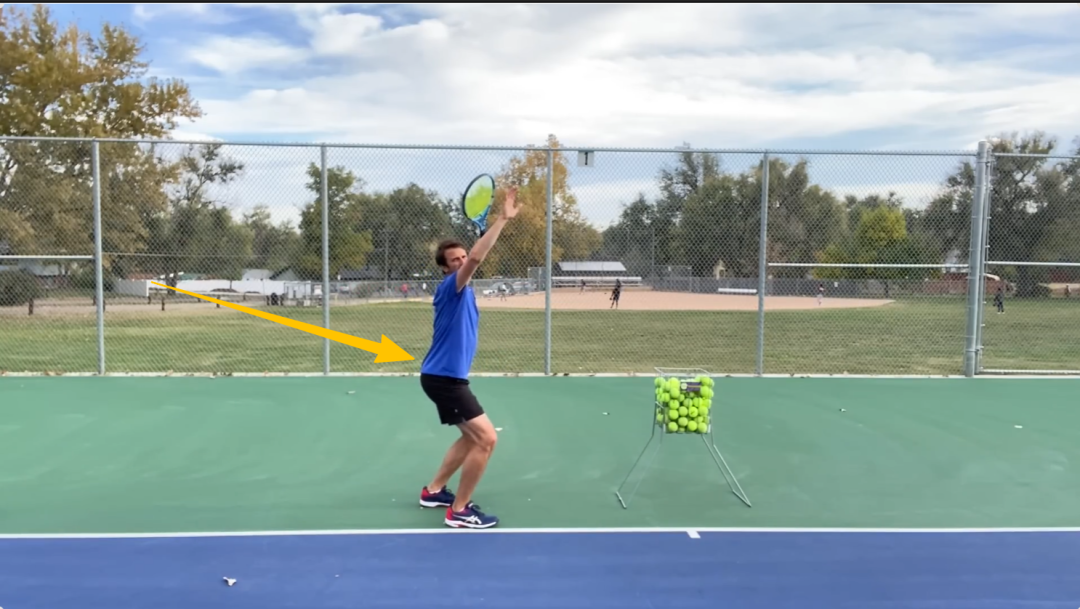
Incorrect example: Raising the hips to serve
By performing the tailbone movement, not only is the pelvic position maintained, but the hip joints are also stretched to their maximum extent.
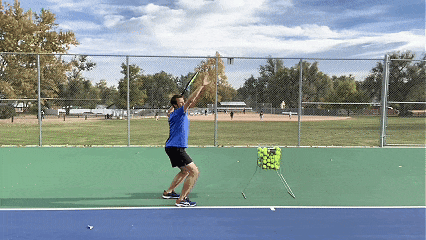
Secure the tailbone to prevent pelvic tilt.
II. Elevated Anterior Hip
Based on the sacral foundation, tilt the pelvis so that the anterior hip joint is higher than the posterior hip joint.
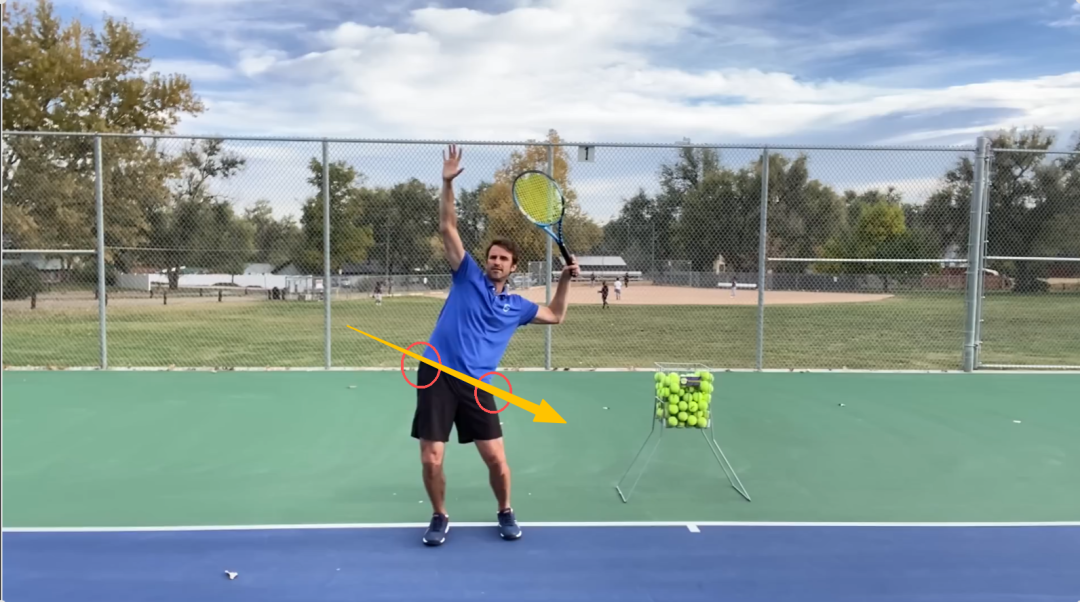
The anterior hip joint is higher than the posterior hip joint.
For most people, performing either the "tailbone tuck" or "anterior hip lift" individually isn’t particularly challenging. However, when you combine the tailbone tuck with the anterior hip lift, you’ll feel a strong stretch in the iliopsoas muscle on the front side of your body. (This sensation of stretching is crucial—it’s the key secret behind building power for your serve.)
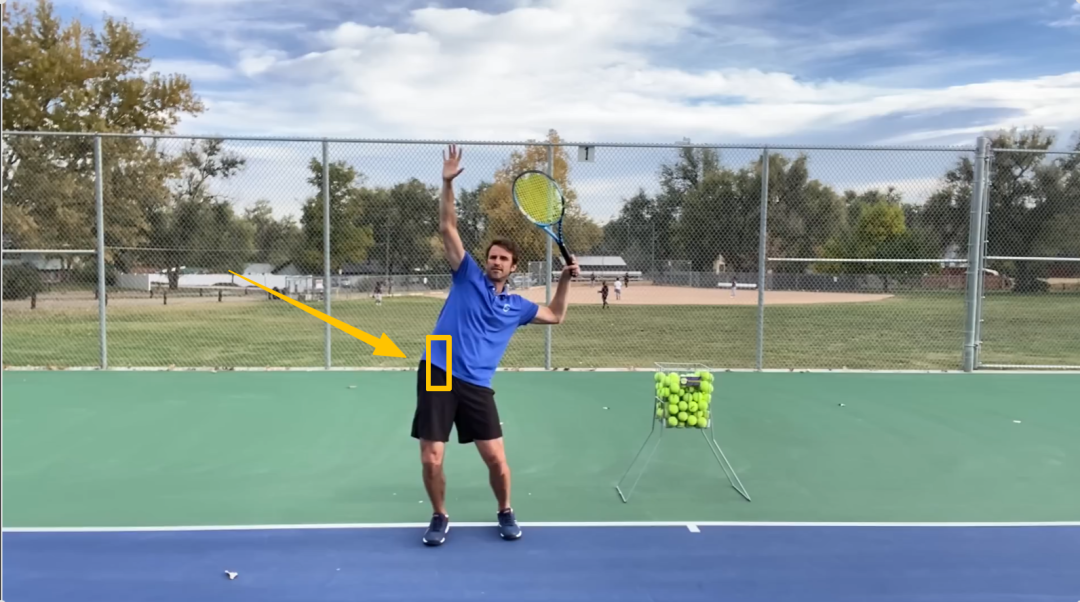
There’s a pulling sensation in the anterior iliopsoas muscle.
3. Building Up Power in the Hind Legs
Most players shift their weight onto their front foot during the "trophy pose," which actually eliminates their ability to transfer their center of gravity smoothly from back to front for the serve. However, placing all the weight on the back foot is also incorrect—it often causes the front foot to move, leading to a foot fault.
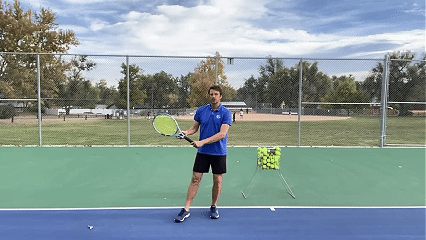
Hip extension fails to generate power in the back leg.
The key detail of the rear-leg setup is that both legs should bear weight, with the rear leg carrying about 60% of the load and the front leg handling roughly 40%. As your serving technique improves, you can adjust this ratio further—but under no circumstances should you shift all the weight onto just one foot.
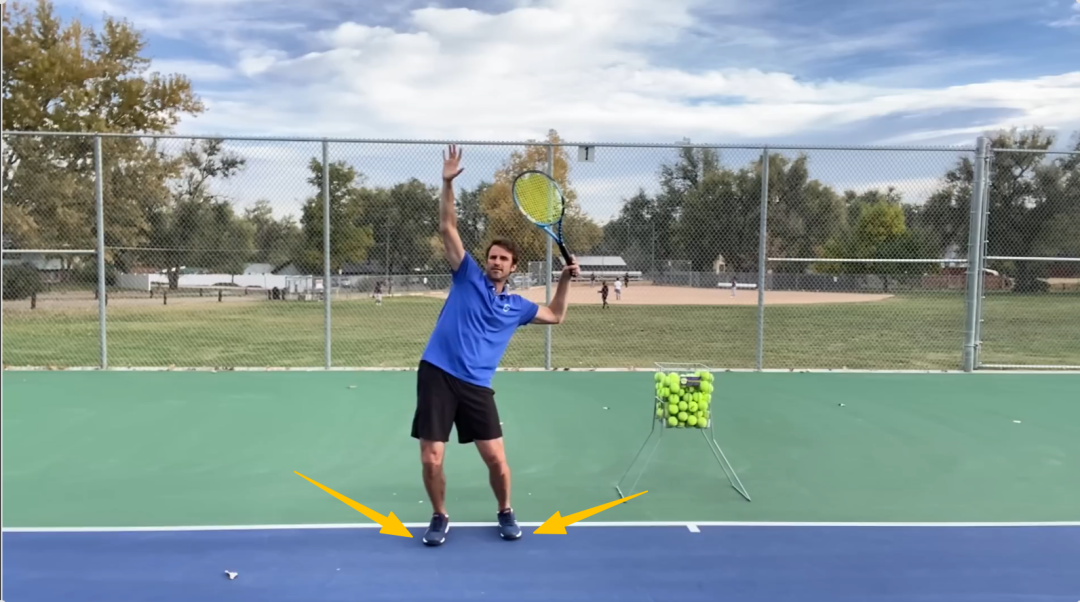
Weight is distributed between both legs in a ratio of approximately 6:4.
04
Written at the back
This article provides a detailed explanation of the reasons and key points behind hip-driven serving, but based on teaching experience, stretching the hip joint proves to be a significant challenge for amateur players—often, weak iliopsoas muscles prevent them from fully executing these crucial details.
As I mentioned at the beginning, most players experience a fitness gap between their current condition and their ideal state.
How can you make your brain aware of the iliopsoas muscle? How do you feel the iliopsoas stretching and contracting? And how can you strengthen the iliopsoas to enhance your serving performance?
These are once again a vast topic—far too complex to fully explain the causes and consequences in just a few words here. However, it’s essential to first address any physical barriers if we truly want to make meaningful progress.
Follow me—keeping the pen moving!✊


